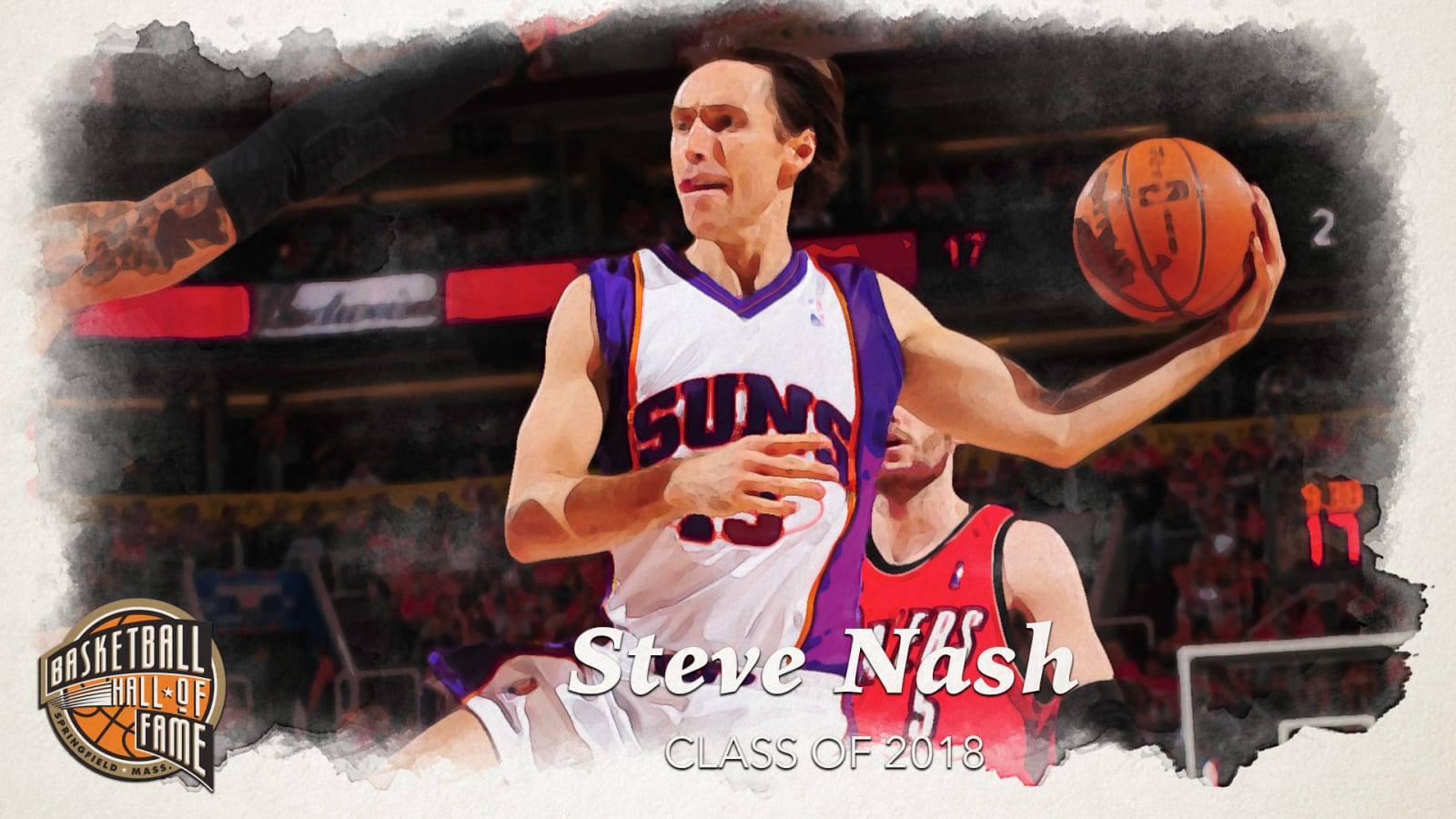
Steve Nash became a Hall of Famer in seven seconds or less
There were times when the point guard would come off a screen with no clear plan in place. He’d run around in circles around the paint with behemoths of men jostling for position, cutting, rotating, pushing, reaching and, by all accounts, wondering. We all were. What would Steve Nash do next? What was he thinking? Where was the ball going? Where was he going? None of it made any sense as it was happening, but it all happened quickly, and suddenly and precisely.
More than any player during his era, Nash executed passes that seemingly materialized out of nowhere. There were angles created that shouldn’t exist, he saw things that weren’t there, and he built opportunities for his teammates with his bare hands. At his best, he was a practicing wizard: an awe-inspiring magician who didn’t pull rabbits out of hats but had the ability to make Phoenix cool.
Those Seven-Seconds-or-Less-era Suns will go down as one of the most fascinating case studies in experimentation in sports of the 21st century. In an era in which nearly every team was playing at a snail’s pace, Mike D’Antoni brought an offensive philosophy that he had been dreaming up since the advance of the three-point line. There’s a story told by his brother, Dan, that following the 1979 season overseas in Italy, Mike called Dan and told him to look into the value of the three-pointer after his team won a title by shooting and making more threes than any other team in the league.
D’Antoni did not invent the space-and-pace offense that we got to watch grow from 2004-08, but he brought it to the NBA during a time in which every team (save for the '04 Pistons) was winning titles off the strength of an elite big. There was perceived value in playing inside out because no one aside from Jordan’s Bulls was winning playing any other way — and no one since the '98 season had a Jordan.
D’Antoni did have a Nash and an idea, though. He made his team smaller, made the half-court bigger and forced teams to defend four-on-five with high pick-and-roll sets. If D’Antoni was the brain of these Suns, Nash was unquestionably its heart, pumping life through all of its pieces. Amar'e Stoudemire was a perfect small ball P&R center, Shawn Marion was an elite two-way player who filled the lanes wonderfully on the break. Boris Diaw allowed for more creativity in the halfcourt while guys like Raja Bell and Leandro Barbosa played essential roles on both sides of the ball.
The 2004-05 season was one of the more pleasant surprises in NBA history. Following a season in which the Suns just won 29 games, D’Antoni and Nash shocked the league and led the team to 62 wins and a trip to the Western Conference Finals. D’Antoni would win Coach of the Year; Nash would take home Most Valuable Player honors. Despite not making the Finals, forgive the pun, the future was bright for the Suns.
Even after losing Stoudemire to injury and via trade, Phoenix would win 54 games, make yet another trip to the Western Conference Finals and Nash would win his second MVP award.
The following year, the Suns lost in the first round of the postseason after losing both Stoudemire and Diaw to questionable suspensions. The year after that, Steve Kerr — then the Suns general manager — traded for Shaquille O’Neal and the identity of the team and an era of Suns basketball was gone forever.
The impact on the Nash-led Suns still remains — ironically in the hands of the man who traded away its identity. Kerr has repeatedly admitted that it was a mistake to trade for O’Neal at the time and has seemingly learned from the mistake with the roster construct of his Warriors — which play a whole lot like the seven seconds or less Suns. Even Nash has worked as a consultant under the team helping Steph Curry and Co. create an offensive identity of their own.
Nash led the NBA in assists five times (three years in a row between 2005 and 2007) and had four 50/40/90 seasons (and a 50/40/89 season). Nash sits at third all time in career assists (one more than Mark Jackson), and as of right now, only two current players pose any kind of threat to unseat him out of the top three (Chris Paul and LeBron James).
Nash ended his career without a title, but he is a people’s champion of sorts and one of the more likable players in the history of the game — even as he was systematically picking your favorite team apart. Nash made the game fun and fast in a time in which we got our kicks from watching guys get buckets in isolation sets on a nightly basis. He had a Hall of Fame career and the upcoming enshrinement legitimizes something we all already believed: Steve Nash was the point god and one of the best ever.
More must-reads:
- Ray Allen: He got Hall of Fame game
- Allen not expecting Hall of Fame congrats from ex-Celtics teammates
- The 'Most points in a playoff game by team' quiz
Breaking News
Customize Your Newsletter
 +
+
Get the latest news and rumors, customized to your favorite sports and teams. Emailed daily. Always free!

